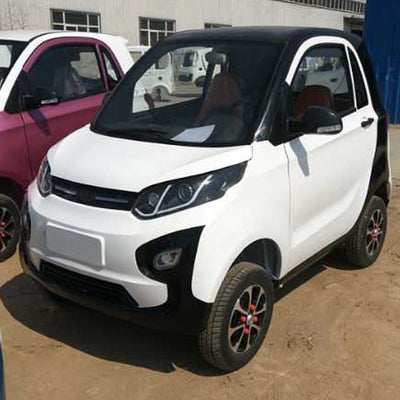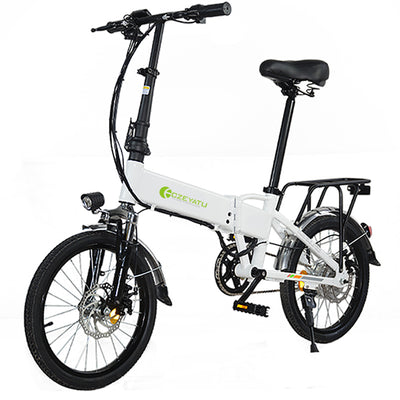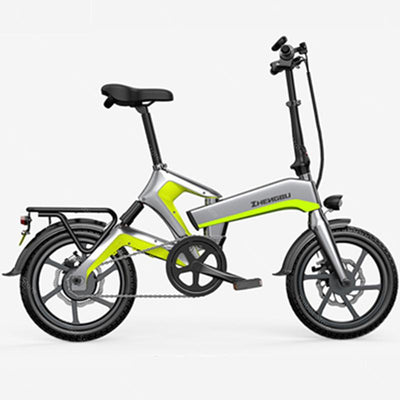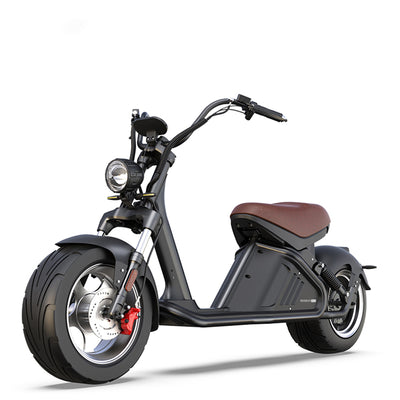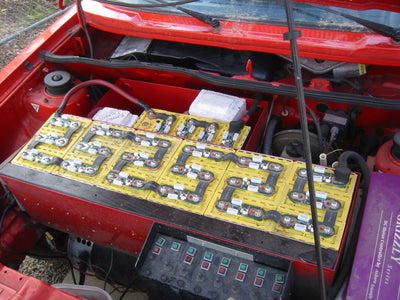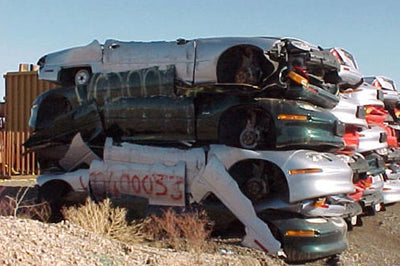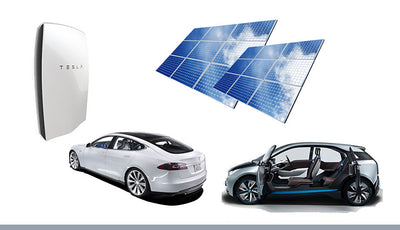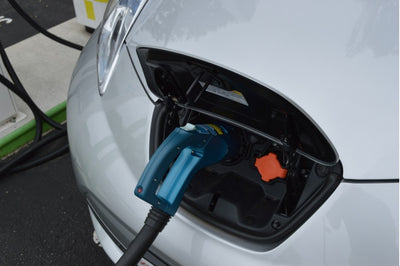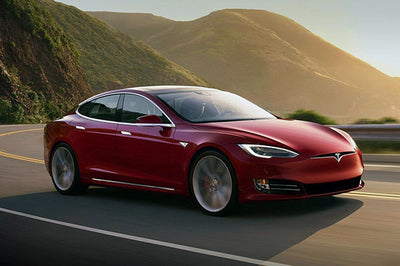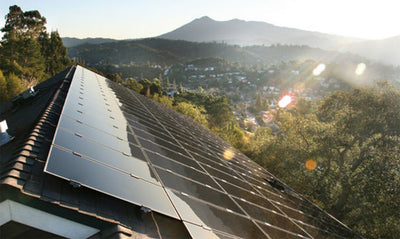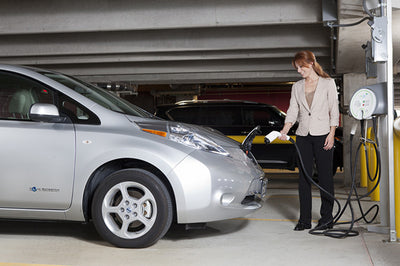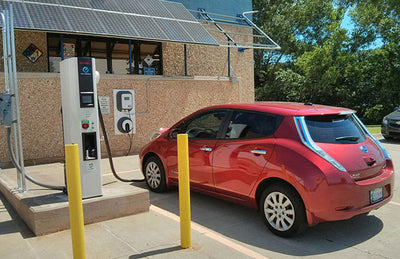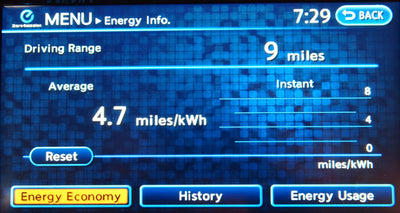The Real Price of EV Public Charging
Posted by Tom Lee on
The gallon is a familiar measurement for most people. Just think about a gallon of milk and you know exactly how big it is. But the kilowatt-hour—an extremely useful term for EV drivers—is unfamiliar.
Gas stations, after more than a century on the scene, have harmonized around the cost of a gallon of gas, using big letters on marquees to announce pricing. On the other hand, electric vehicle charging costs are not nearly as clear.
- Some EV charging stations require payment by the hour, dispensing however much energy the car can take during that time.
- Others charge by the mysterious kilowatt-hour.
- There are charging stations that use a per session fee.
- Then, there are charging locations that require a monthly or annual subscription fee, following an all-you-can-eat model.
- And a bunch of charging stations are free.
It’s important to gain a grasp of these pricing schemes so you can compare the cost of charging in public to what you pay at home. Using household electricity will almost always be less expensive than stations that aren’t free. But how much cheaper?

The quick charging station at Serramonte Center in Daly City, Calif., in front of the Elephant Bar and JC Penney, is free. When using PlugShare, uncheck the box for "Payment Required," to locate free stations.
While various factors make it difficult to set the benchmark price for home charging, we can point to a national average price for a kilowatt-hour of household electricity, as documented by the U.S. Energy Information Administration. For January 2019, the U.S. Energy Information Administration website shows an average retail price of $0.1249 per kilowatt-hour (kWh). Of course, your price—depending on where you live, and your specific rate plan—will vary.
Most utilities offer a special EV rate plan, which sets the price at a few pennies per kWh when charging after midnight. Also, let’s not forget that the efficiency of your EV determines how far you go on a kilowatt-hour of energy. Electric cars go between two and five miles on a single kilowatt-hour. That means, the average EV driver will spend three pennies or less on electricity for every mile of driving. Some utilities, like this one in Texas, have even given electricity away after midnight!
With these complexities in mind, it’s still possible to examine various public EV charging scenarios to determine if you are likely to pay more or less than your home-based electric fuel.
Free is Good
The majority of public EV charging stations are still free. The economic benefit of those stations is a no-brainer. Nonetheless, the convenience of charging overnight at home—even though your power meter is turning, followed by a utility bill at the end of the month—means that home charging will make up 80 to 90 percent of your charging. You want to be ready to roll with a full pack in the morning, right? Still, if you plan ahead, and use PlugShare to do research, public charging can almost always be free.

The charging stations at the Community Hospital in Monterey come in multiple flavors. The Nissan CHAdeMo quick charging station, which had been free, requires a $6.50 per session fee at the time of this publication, regardless of how much energy you pump into your car.
By the Hour
Among the public charging stations that require a fee, most of them use time (rather than kilowatt-hours or kWh) to set a price. For simplicity, let’s say that the price is $1 per hour. Today’s EVs have onboard chargers with a rate of between about 6 and 10 kilowatts. Logically, if losses are kept to a minimum, you will add at least about 7 kilowatt-hours of energy to your battery in one hour. So, dividing that single dollar by 7, means you’re paying $0.14 for each kilowatt-hour. That’s pretty darn close to the national average for electricity—although maybe two or three times what you might pay if you’re on an EV time-of-use plan.
Keep in mind that some charging locations leave the proverbial meter running until you unplug. So, even when the battery is full, and the electrons have stopped flowing, the price for that charging event continues to rack up—sometimes creating a nasty bill. For multiple reasons, it’s best to unplug as soon as your battery is full.
By The Session
So far, we’ve only been talking about Level 2 240-volt charging—for which you commonly pay either by the hour or it’s free. But for a 50- or 100-kW blast from a DC Fast Charger, it’s more common to pay for a “session.” That’s loosely defined as one time that you plug in. (See our guide to quick charging.)
For example, if a network charges a fee of $7.50 or more for each DC Fast Charger session, the best economic case is to take your battery pack from empty to about 80 percent full. Let’s assume that your battery pack is 60 kilowatt-hours. (It’s unlikely for your car to be completely empty, so the number of kWh will be less.) So in the optimal situation, you will pay about $0.15 to $0.20 per kWh.
Regardless, you should assume that your dollar-per-kilowatt-hour cost will be about double what you pay at home—essentially a pricey fee that you don't mind paying when you are on a road trip or in dire need of a charge, but not something that you would want to do on a daily basis.
There are a few other factors to consider:
- Networks that require a membership fee are essentially hiding some of the per-session fees.
- Tesla Superchargers are “free” to some of its owners, but owners usually pay an expensive up-front fee to gain access to the network. Fueling costs are basically built into the initial purchase of the vehicle.
As you can see, it’s quite difficult to make an apples-to-apples comparison of home electricity to public charging. Besides, you are paying something up front regardless of whether you ever take a charge—somewhat similar to annual fees at gyms, which earn a pretty penny from folks who have every intention of exercising but rarely if ever sustain the use of facilities.
Here’s the takeaway: Use PlugShare to seek out free public charging whenever possible. It’s still widely available. If you really need a charge and you have to pay, don’t sweat the extra cost. Sure, you are likely paying double in public for the convenience of charging on the go—but it’s still way cheaper than gasoline. Public charging will rarely compete with home charging on an economic basis, but it’s part of the EV driving experience when you need that extra boost to get to your destination.





